Benefits and Limitations of E-Commerce – E-commerce has transformed the way businesses operate and how consumers shop. With the rapid growth of the internet and mobile technology, more companies are tapping into the potential of online selling. However, like any business model, it comes with its Benefits and Limitations of E-Commerce that must be carefully considered. For businesses aiming for growth, understanding the different types of ecommerce, its features, and the advantages and disadvantages of e-commerce can help make informed decisions that drive long-term success. In this blog, we’ll break down these elements to give you a comprehensive view of how e-commerce can work for you.
What is E-Commerce?
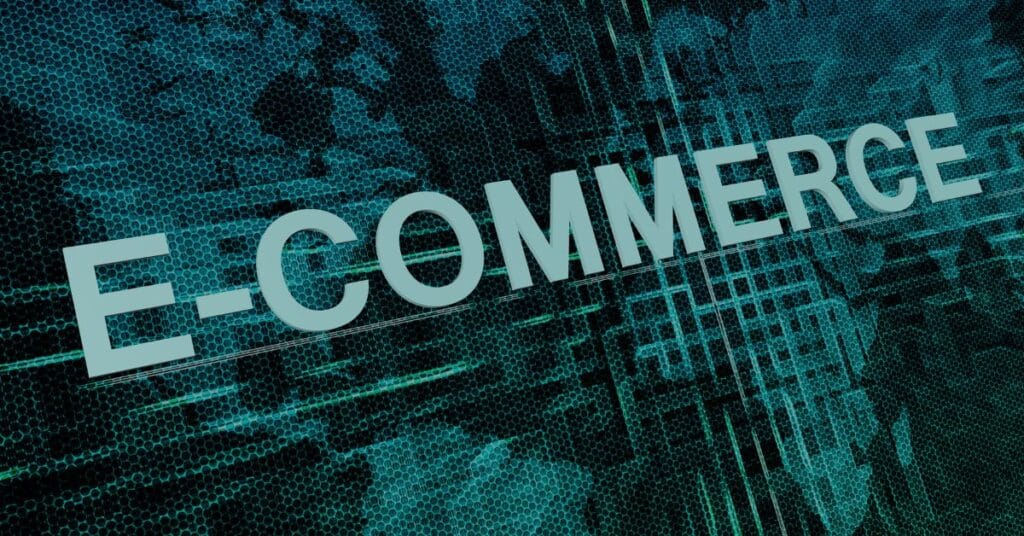
E-commerce or electronic commerce involves the buying and selling or delivery of goods and services through computer telecommunications. It encompasses business and commercial transactions based on the new media technology involving internet sites, blogs, social media networks among others. B2C and B2B e-shopping has become prevalent in the marketplace and almost all business whether small scale or large scale have adopted it as an essential tool in the global market.
The mobility aspect of e-commerce has been arrived through increased internet usage, mobile commerce, and intelligent technologies like Artificial Intelligence and machine learning among other. Due to growth of Internet using population continues to shop online, it means that business people can access the international market and purchase anything they need for their business.
Different Types of ECommerce

Different Types of ECommerce, When considering e-commerce, it’s important to understand the different types of ecommerce models available. Each model is tailored to specific business needs and goals. These models include:
- B2B (Business-to-Business)
B2B model is where two or more companies buy and sell goods to each other, for instance manufacturers selling to wholesalers or wholesalers selling to retailers. The B2B market is enormous; it mostly entails huge order quantities and develop business partnerships in most cases. A good example of B2B e-commerce is Alibaba, through which different businesses can look for sources or for merchandise that they require. - B2C (Business-to-Consumer)
The B2C model can be claimed to be the most frequently used e-commerce model today. It refers to a model where organizations and companies make and sell products to customers with little or no intermediate stores putting in their input. This kind of model can be more observable in online sales sites such as Amazon where apparatus from more than one marketer is accessible to a single buyer. Thus, it has become one of the most rapidly developing segments of e-commerce because people are increasingly using various deliveries as more convenient than going to traditional shops. - C2C (Consumer-to-Consumer)
The definition of C2C e-commerce is that consumers are able to sell products or services directly to other consumers where network intermediaries have the potential to play an important role. The examples of this model are eBay using which people can sell items that are used or second-hand and other platforms similar to craigslist or Facebook marketplace. - D2C (Direct-to-Consumer)
The D2C business model is an approach that eliminates the middle))(add to emphasis on business organizations selling their products directly to the final consumer. This model has been specifically preferred by many companies especially in fashion and beauty niche, companies such as Warby Parker and Glossier sell their products through their own website or apps thus making it easier for users to get they products.
Each of these different types of ecommerce models offers unique advantages and challenges. Choosing the right model depends on factors such as your target market, product offerings, and available resources.
Key Features of E-Commerce
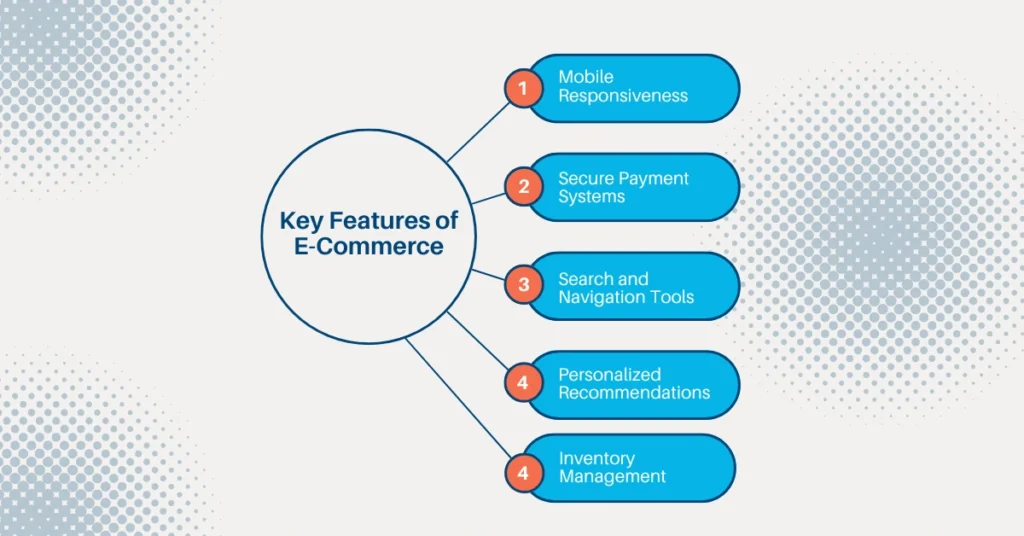
Thus, an e-commerce platform is not about simply having the most attractive product; it also matters what e-commerce features can help consumers make happier customers. These features of E-Commerce include:
- Mobile Responsiveness
Mobile devices have been replacing fixed devices as the dominant tool for accessing the Internet and your e-commerce website must be mobile-friendly. Internet users’ percentage using smartphones for shopping is more than 70%, hence using a mobile-friendly platform will greatly enhance interaction and purchases.
- Secure Payment Systems
Another consideration, which customers face while purchasing products through the internet is safeguarding of their transactions. Hence, the use of payment systems/technologies, SSL (Secure Socket Layer) encryption, Digital wallets like PayPal & Apple Pay and multiple payment gateways makes customers safe for making transactions.
- Search and Navigation Tools
A simple and efficient searching tool and filter option enhance the experience of clients utilizing a given e commerce site. Customers crave for easy and simple methods of pointing at what they are looking for. Such features like the AI search of the contents can further optimize it.
- Personalized Recommendations
AI applies in the fashion of recommending products such as recommending the next course to purchase, recommending products that have been viewed earlier. But it also helps to increase the rate of conversion rates since the products offered to customers are those they are most likely to purchase.
- Inventory Management
Real time stock availability/stock control help s businesses avoid making sales of products that are out of stock. Computerized systems can be of great help in maintaining up to date record as to the commodities available in stock, minimizing on mistakes which may delay the processing of orders that in turn may result in loss of customers.
Thus, investing in some priority e-commerce features will allow improving consumers’ satisfaction with the purchasing process and, therefore, purchases frequency and amount.
Benefits of E-Commerce

There are numerous benefits of e-commerce that businesses can capitalize on. Here are some of the most significant advantages:
- Wider Market Reach
A primary advantage of being involved in e-commerce is because it means that entities are in a position to get the attention of an international market. Since it can operate for the whole day, it means that they can be able to attend to customers from around the world at different times hence market their products in the international market. This is helpful in the current world because small businesses such as online shops cannot afford to open physical shops everywhere. - Cost Reduction
This means one of the biggest cost-saving measures of e-commerce is that no physical infrastructure like stores or store personnel or utilities are needed. This also reduces the costs cutting on overhead expenses and make the owners to channel amount to other relevant areas in the business for instance in digital space or in developing new products. - Round-the-Clock Availability
Online stores are available at all times because shoppers can access the stores at any one time. This advantage rises the sale since it is inexpensive and there is no fixed time when one must buy a given product. - Data Insights
Website owners are able to gather much information about customers and their habits and purchasing tendencies with the e-commerce environment. With help of this data marketing goals can be targeted and adjusted, services and products can be offered at the right time, and customer service can be upgraded making sales and customer satisfaction flourish. - Easy Marketing
While many e-commerce shopping carts are designed to work seamlessly with other internet marketing tools, like email marketing, SEO, and paid social ads. With the help of computer technology, business people can be able to analyse the performance of their advertisements and make proportional adjustments.
These being the benefits of e-commerce, there are many prospects in the digitized world that businesses could undertake to increase their size and turn into industry giants in little time.
Drawbacks of E-Commerce
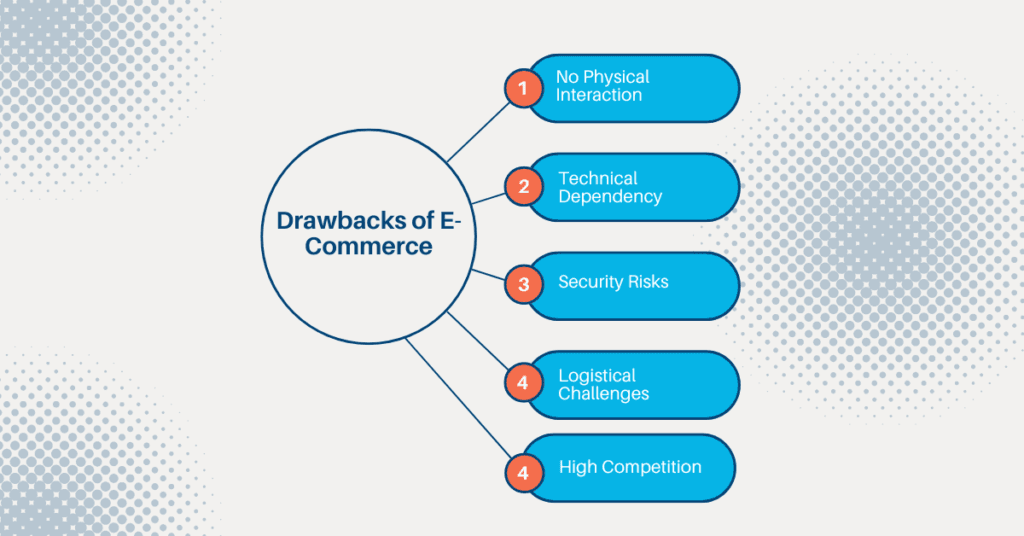
Drawbacks of E-Commerce, While there are many benefits to e-commerce, there are also drawbacks of e-commerce that businesses must consider:
- No Physical Interaction
One of the primary drawbacks of e-commerce is the lack of face-to-face interaction with customers. Many consumers prefer the tactile experience of seeing and touching products before making a purchase. This can be quite a problem especially on products such as clothing or furniture since customers may not buy a certain product without seeing or touching it. - Technical Dependency
E-commerce platforms involve a lot of technological support; therefore, any breakdown will definitively paralyze the platform. It means that customers can hardly make purchases if the website suddenly crashes, payment gateway isn’t working or the server is down. Such problems can be prevented by constant site updates and strong IT backup and support. - Security Risks
Security has become an essential factor in e-business since both the sellers and buyers are vulnerable to cyber attacks or scams. Security and Firewall protection systems like encrypted payment system are important in safeguarding customers details and thus ensure that you are trusted with their information. - Logistical Challenges
The transactions of logistics, delivery, and returns can also be a challenge when dealing with order from around the world for the e-commerce industries. Loss of time, damaged products, delayed shipping and customs problems adversely affect the customers and add to the cost of business. - High Competition
The e- commerce market is extremely saturated having a large number of players, not less than thousand. Merely having good products isn’t enough one has to market it well; provide good customer service and offer a promise and added value that sets one apart from the rest. these are all athe Drawbacks of E-Commerce
Advantages and disadvantages of e-commerce
Advantages:

- Convenience: E-commerce allows patronage at any one time from any location, which makes it more convenient.
- Scalability: One of the key advantages is its virtually unlimited expansibility since expanding a range of goods, services, or even the company’s market, in general, does not require opening new stores.
- Lower Entry Barriers: Launched on the internet, e-commerce business is usually established with less amount of money compared to traditional business. These business can be established with very little capital and the business can then start growing and expanding.
Disadvantages:
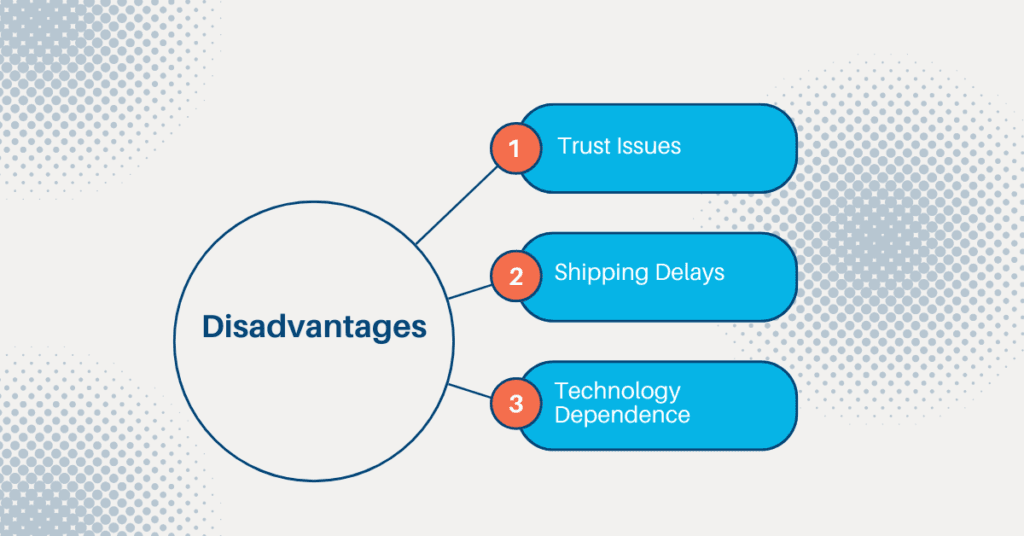
- Trust Issues: The consumer may not want to shop from a new site or a site run by an unfamiliar person. Product reliability must be achieved through credibility of customer review and testimonials and through establishing a reliable policy.
- Shipping Delays: Logistics of third-party shipping services are often used by e-commerce companies, and this means that some can sometimes be slow. Practical delivery with tracking services and effective communication assists in creating the right customer expectation.
- Technology Dependence: Since the issue is crucial, companies need to invest in advanced technology in order to survive. There are always adverse effects associated with poor, old or outdated user interfaces; they normally lead to poor customer experience.
Also Read | Ecommerce Advantages and Disadvantages: Smarter Business
Features of E-Commerce That Drive Growth
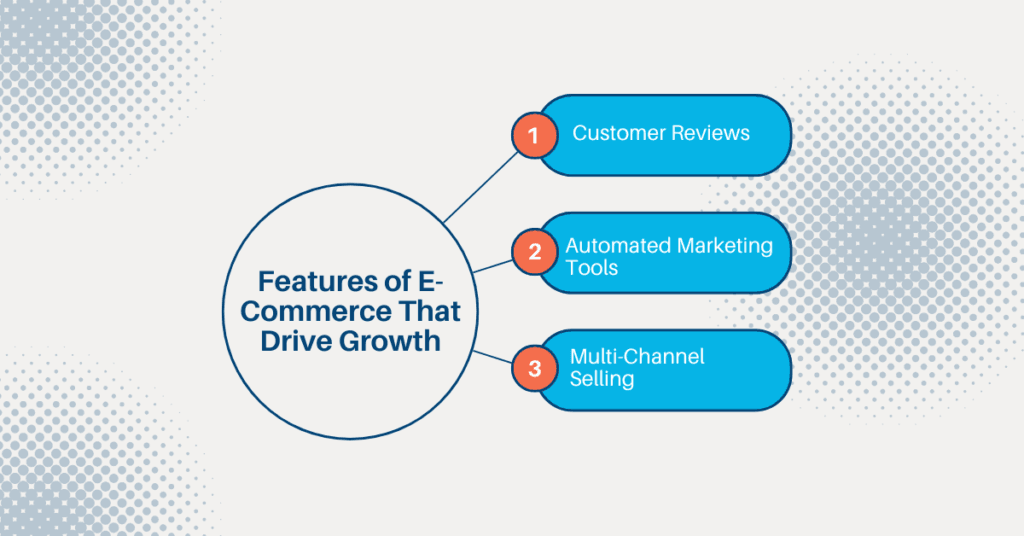
Features of E-Commerce ,Modern e-commerce platforms offer various features of e-commerce that can enhance business performance and drive growth:
- Customer Reviews: Such reviews would increase confidence to the potential buyers’ level that would lead to a purchase.
- Automated Marketing Tools: Recipients can be targeted towards previous emails and retargeting ads can increase conversion rates.
- Multi-Channel Selling: E commerce enterprises can sell through different platforms, these include social media sites, online stores as well as through other websites, this is because it is able to reach wider market.
Such features, therefore, help e-commerce businesses achieve their growth potential.
Conclusion: Embrace E-Commerce for Business Success
Electronic commerce presents organizations mind-boggling prospects for growth, sales, and overall customer relations. Thus, having analysed the advantages, disadvantages and the key features of e-commerce, it is possible to make the right decision to start using e-commerce. At the same time, there are certain risks, namely technical operations’ dependence and competitive pressure to consider to achieve a sustainable result.
For instance, this, and the further growth of the number of people who make purchases only through the Internet, indicate that the future is only getting brighter for e-commerce. If customers satisfaction will help your business to survive the online market environment then in trend with modernization and focusing on innovation to enhance your e-commerce site in every possible way then you should do it.







